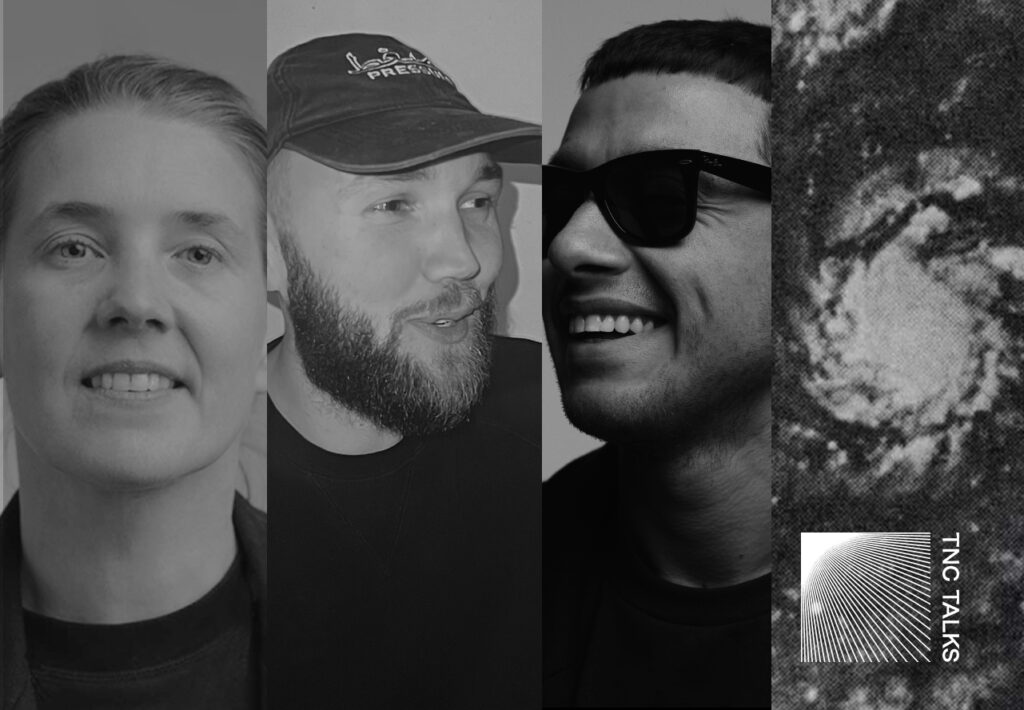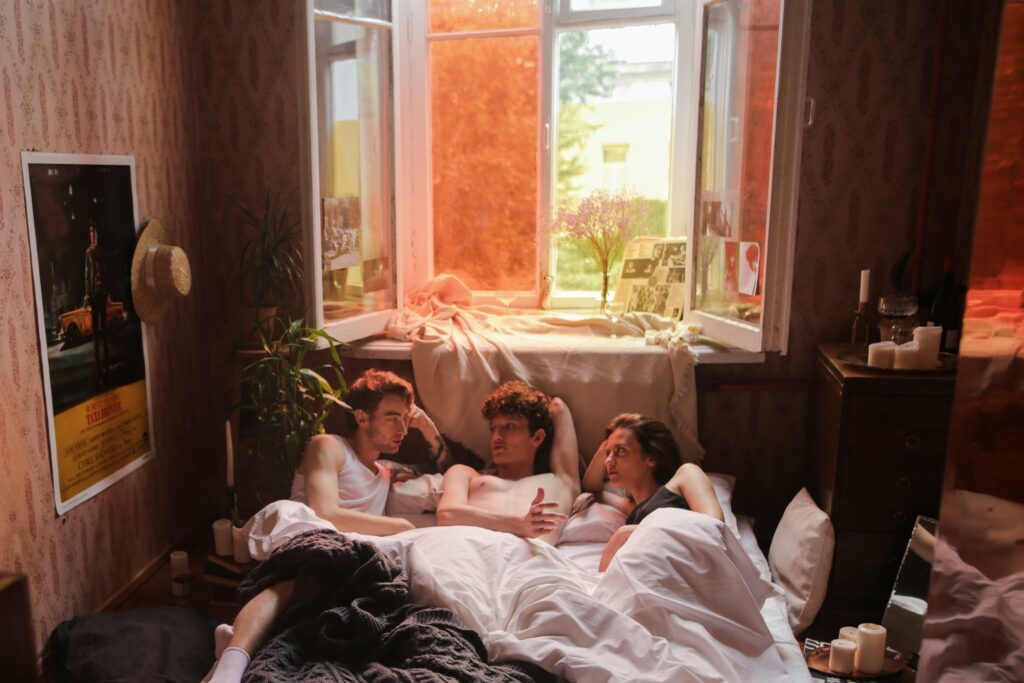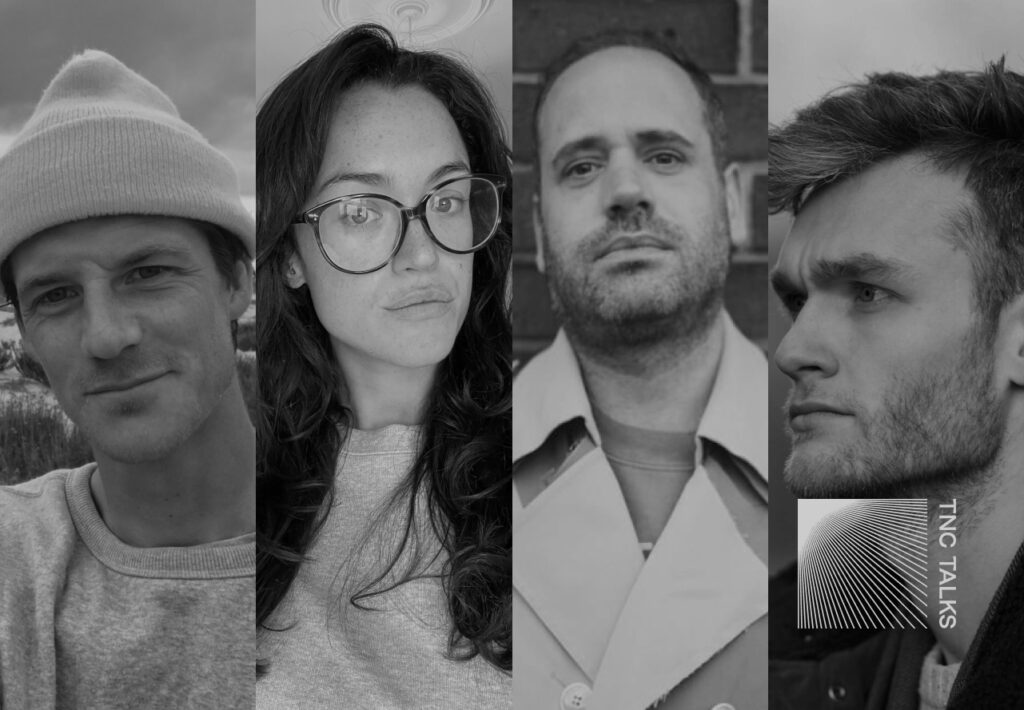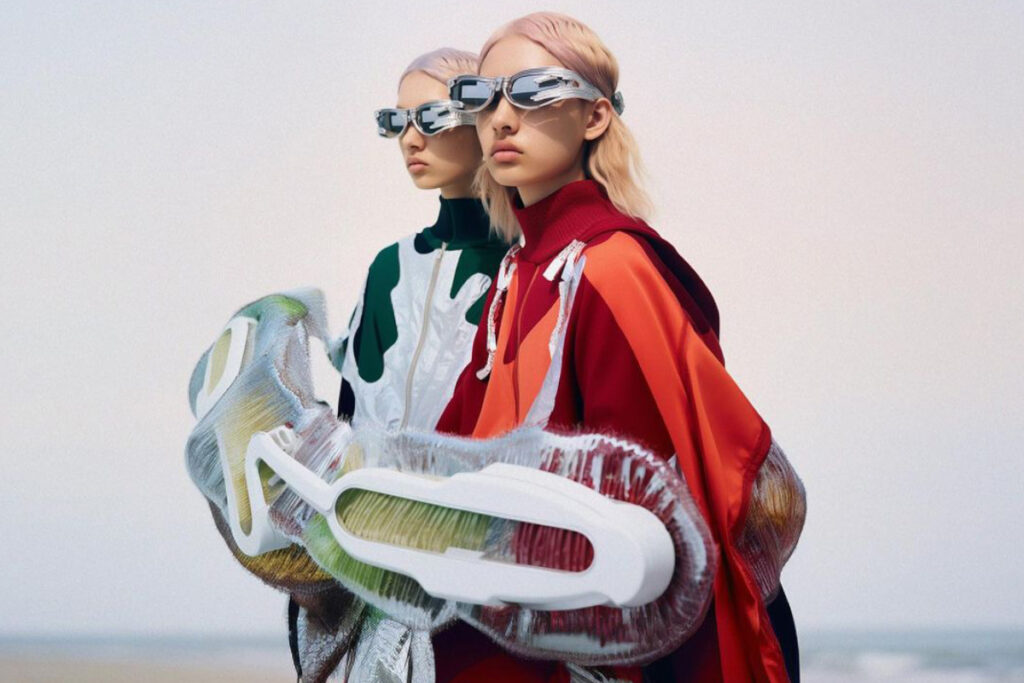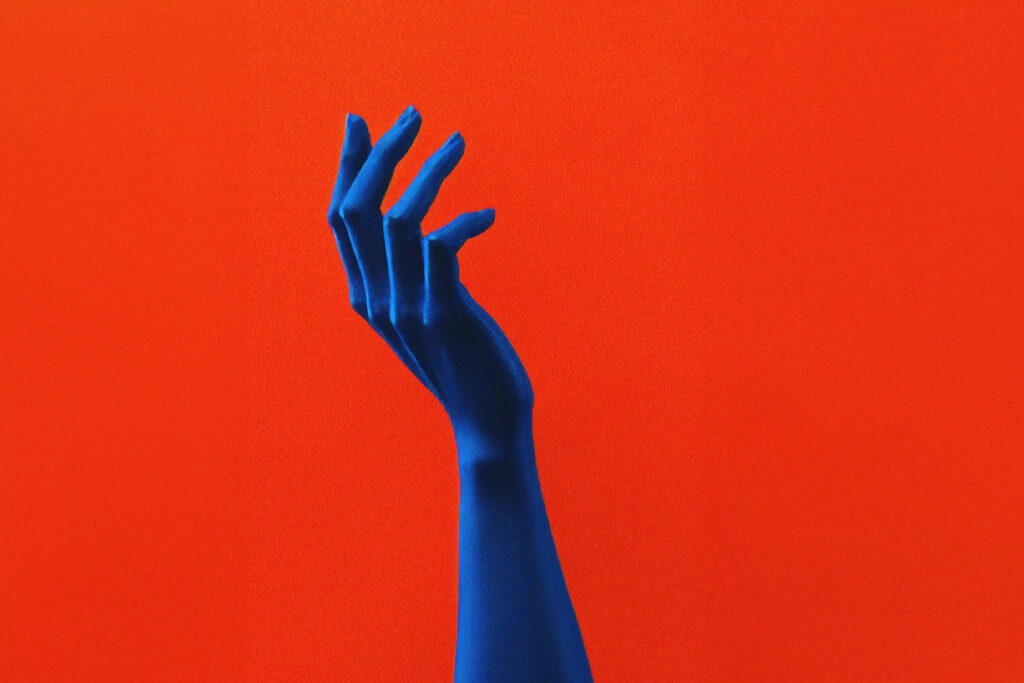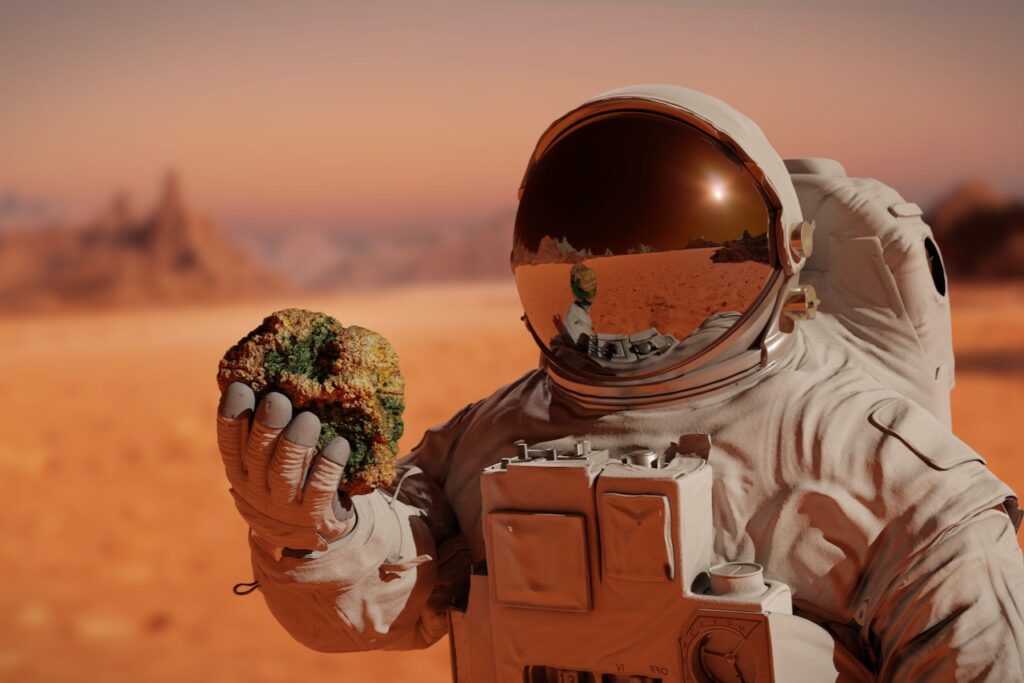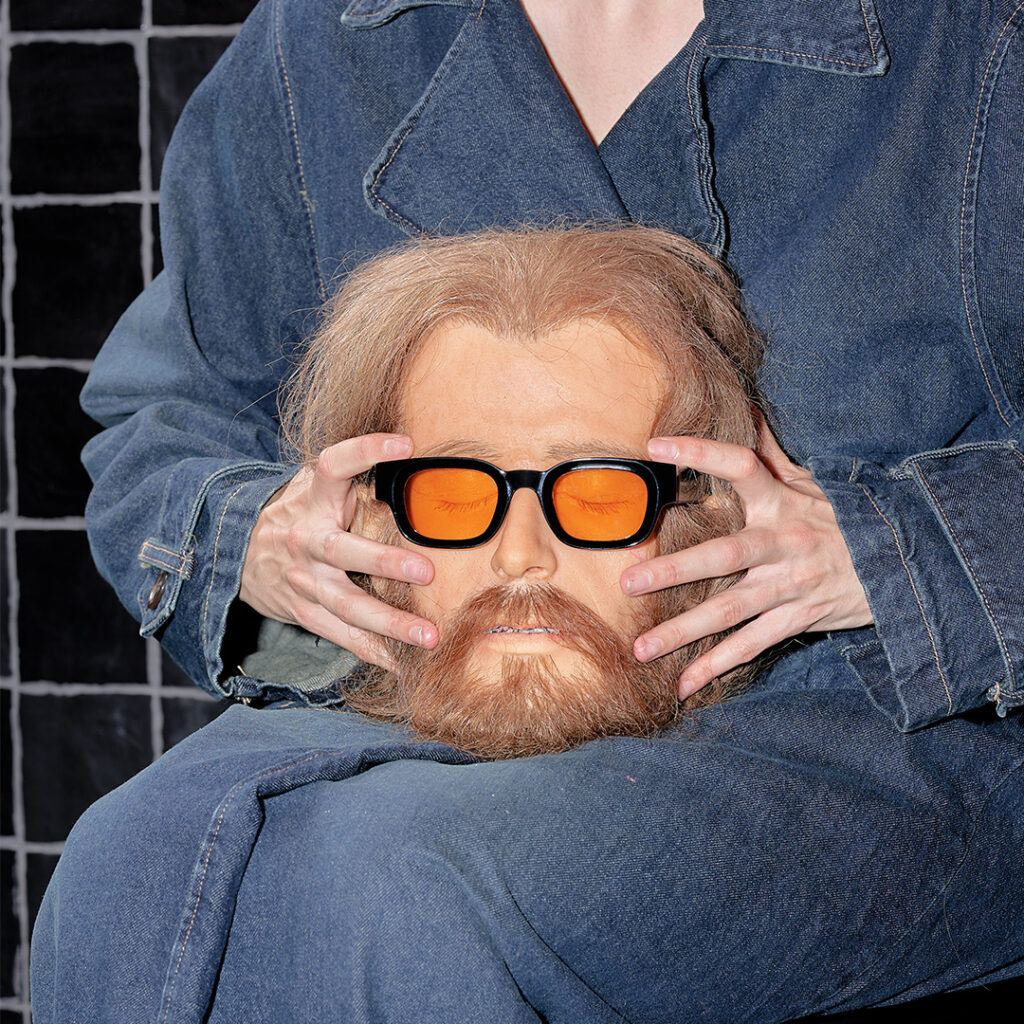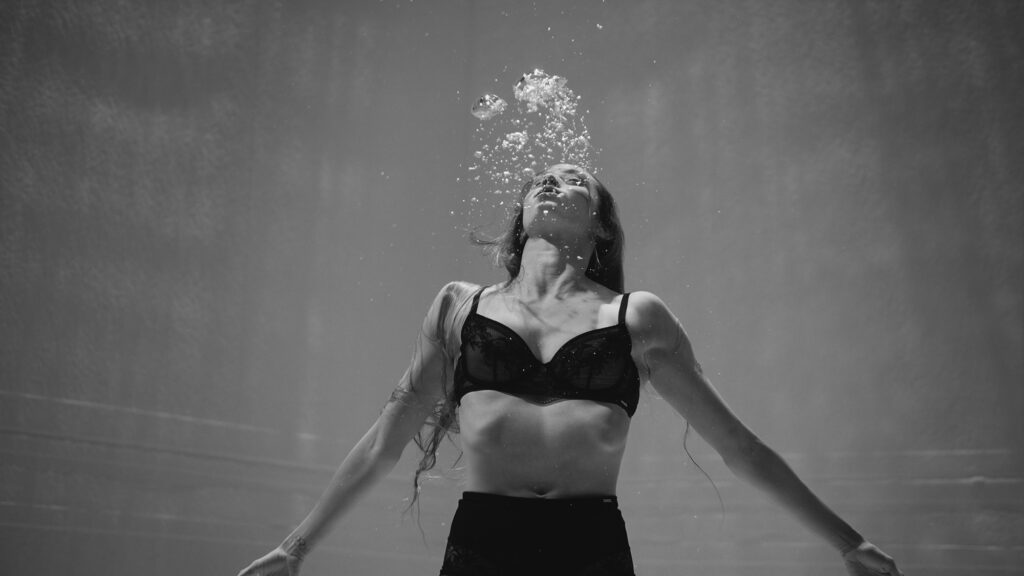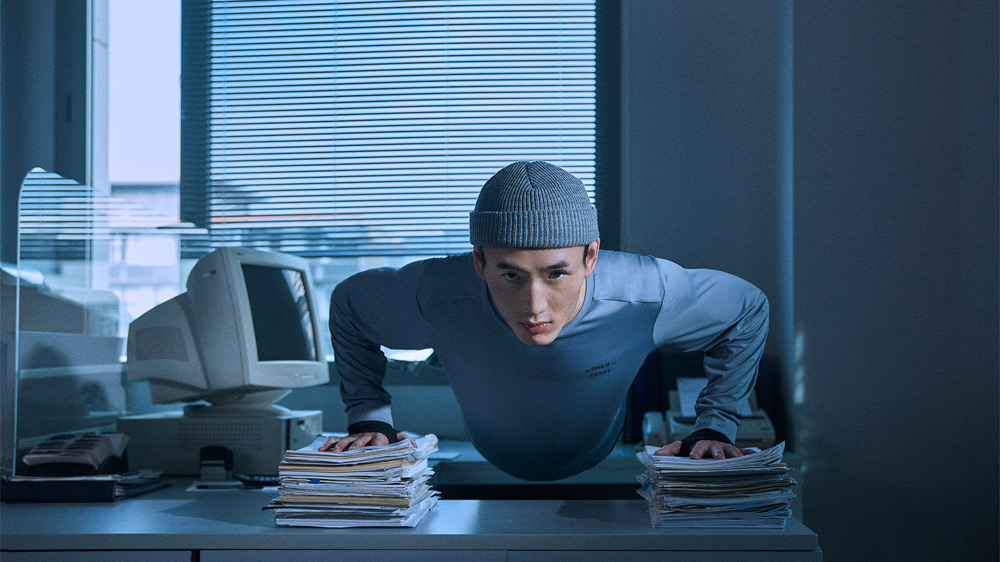Tobias Raschbacher isn’t the kind of designer that will tell you how much a certain cartoon or videogame has inspired him. Quite the opposite, actually… as he did not have much technology around while growing up. Rather than TV or videogame addicted, he was a huge fan of Lego, “which is basically like modelling stuff in 3D at a very low resolution”: and it only made his work as a graphic designer, filmmaker and photographer much more original and thought-provoking.
“I like to think about an obsolete object in today’s hyper-technological world”
Raschbacher’s work is not just about a nice design, though. His most recent series of posters POWER mixes infographics and typographic elements while raising awareness about politics, gender inequality, nuclear weapons and the structure of power overall.
“I wanted to explore what shapes the world we live in or who shapes it using which means”
 Source: Tobias Raschbacher
Source: Tobias Raschbacher
From Vienna to Berlin -and back- Tobias has made no secret of his privileged position as a graphic designer: rather than feeding the consumerism demand with advertising projects, his work is meant to make people reflect on specific topics.
“I think design can and should sometimes be political[…]Trying to make this complex world a bit more structured should be the approach to a certain extent to every visual communicator”
Not enough?
DJ as a hobby, Tobias sees in his collaboration with electronic music artists a way to promote his favourite genre. “I couldn’t think of a lot what I wanted to support more with my skills than pushing electronic music further.”
The Next Cartel has joined Tobias in a talk about his work, inspirations, the love for electronic music and, of course… a peek of his latest projects!
TNC: Designer, photographer, filmmaker… Who is Tobias Raschbacher?
TR: This is a good question to start with because I am asking myself the same thing almost every day. I want to keep doing all of those three, sometimes mixing up the disciplines. I certainly put most effort in design but recently I am keener on video and photography again, which has probably also to do with the warmer temperature outside.
Actually, I started to experiment with video and photography when I was a teenager before I even thought about becoming a graphic designer. My first freelance jobs were shooting short videos for small clients, mostly people I knew. After a few years of doing that I became more interested in playing around with typography and graphic design.
 Source: Tobias Raschbacher
Source: Tobias Raschbacher
TNC: How and when did you start working within graphic design and 3D animation? Was it one of your childhood dreams? How did your career evolve?
TR: When I was a child, I wasn’t really aware of the possibilities of 3D and animation, which also quickly evolved in the last decades and became more and more accessible especially for small designers.
I grew up without a TV and never owned a Gameboy at home and played hardly any computer games, so I cannot say that computer graphics inspired me to put more effort into 3D animation. But I had tons of Lego bricks when I was a kid (props to my parents), which is basically like modelling stuff in 3D at a very low resolution. So, I guess Lego plays a major part in why I am doing what I am doing today. 3D design was the logical next step when I had worked a lot in 2D graphic design and was a bit fed up with the limited possibilities, especially when it comes to animation.
 Source: Tobias Raschbacher/Plastic Dreams Poster
Source: Tobias Raschbacher/Plastic Dreams Poster
TNC: From Bryond to PostPoster, your films seem to depict a very close future. Do you feel that way, when thinking about tomorrow?
TR: On one hand I feel quite optimistic about the future because I can see how many things in so many areas like medicine or technology improved in the last decades and made the life of billions of people easier and more comfortable.
On the other hand, there are serious problems coming closer and closer, above all the climate crisis which already worsens the life of billions of human beings on the planet, especially in the global south. This gives me a pessimistic perspective about the future since humanity is acting way to slowly and now we are even mainly busy with fighting a global pandemic.
Furthermore, technology is evolving so fast that humanity obviously cannot deal with it at the same pace. Switching from the material world more and more to the virtual cyberspace and its surveillance possibilities will have unknown effects on humanity.
I just read ‘1984’ [written by George Orwell] again and when looking at China and their Social Credit System and the most surveilled cities worldwide I can’t tell what’s dystopian fiction and what’s reality anymore.
 Source: Tobias Raschbacher/Anton Defant book cover
Source: Tobias Raschbacher/Anton Defant book cover
TNC: What is the inspiration behind your works? What is your creative process like?
TR: I find inspiration almost everywhere. When walking through the city it might be some trivial object in the environment. May it be its shape or function, it can give me new inputs for thinking of possible renderings or animation.
Going to exhibitions is of course also very inspiring. I also like to look at other design disciplines such as architecture or product design.
Sometimes it is more concrete, e.g. for my project ‘Bryond’ I did a lot of research on the CRISPR-Cas9 technology which can be used to modify the human genome.
The idea for my project ‘PostPoster’ came into my head when I thought about new ways of spreading information offline when the online world is controlled by the government as in China.
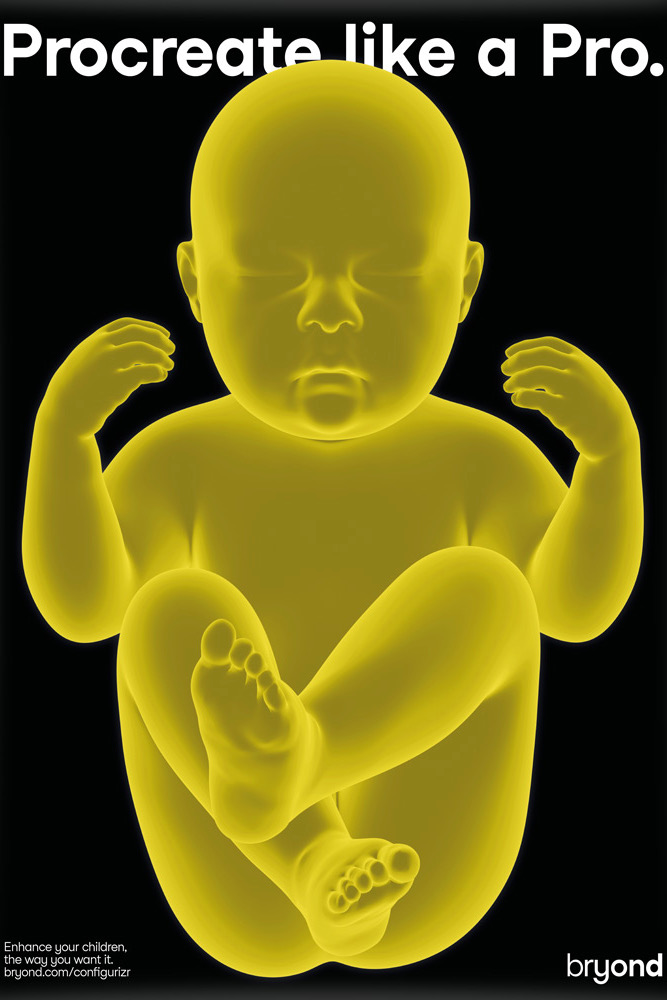 Source: Tobias Raschbacher/Bryond
Source: Tobias Raschbacher/Bryond
TNC: Has the pandemic affected your work? How?
TR: First of all, I have to say that I am in a very privileged position but there were still some things that changed for me.
As I work as a freelance designer focusing on the electronic music scene, a lot of potential projects didn’t happen. All of the events were cancelled and in the first months of the pandemic, I felt that the requests for jobs went down drastically. Now it is getting better again but I think in general Covid harmed my development as a freelance designer quite a lot since so many job opportunities and potential contacts with clients connected to the electronic music scene did not happen.
However, when I first experienced a bit of normality again during the summer months when the restrictions were loosened dramatically after a few months of lockdown, I felt how inspiring a busy environment can be and was unable to cope with all the different inputs.
So I guess at first the quiet time was good for my mental health and it felt good to come down and not having fomo [fear of missing out] all the time but after some time I experienced how much I missed all the impressions you can make in a lively city with all its human beings and business going on.
 Source: Tobias Raschbacher
Source: Tobias Raschbacher
TNC: Berlin is the Underground city par excellence. As a designer, what most appealed to you when you decided to move in?
TR: I lived in Vienna for some years before temporarily moving to Berlin for one year (in the end it was just about six months due to the pandemic).
Berlin seemed to be a lot more anarchic. I liked the dirty charm of Neukölln where I used to live in a shared flat. The whole environment inspired me to distribute stickers with a QR code linking to my website in the city. In the end, only one person wrote me, but I guess that almost nobody scans a QR code in the mass of stickers decorating the public space of Berlin.
As a freelancer working a lot for the electronic music industry it was also quite obvious to spend some time in Berlin.
TNC: Do you think there is a different perspective in German and Austrian design?
TR: Well, we share the same language, and many parts of our culture are very similar. When it comes to comparing both countries, we always say that Germany is ten times Austria since it has approximately ten times the number of inhabitants. That is probably also true for the number of people practising design and similar fields. But I don’t think that there are huge differences in the design style, in both countries you would find a range from very commercial advertising design to more experimental graphic design for cultural institutions.
Both countries have a rich heritage of designers and artists of the 19th and 20th century who influence the design scene until today such as Josef Hoffmann or Kolo Moser (Wiener Werkstaette) and Julius Klinger from Austria or Otl Aicher, Peter Behrens or Kurt Weidemann from Germany just to name a few.
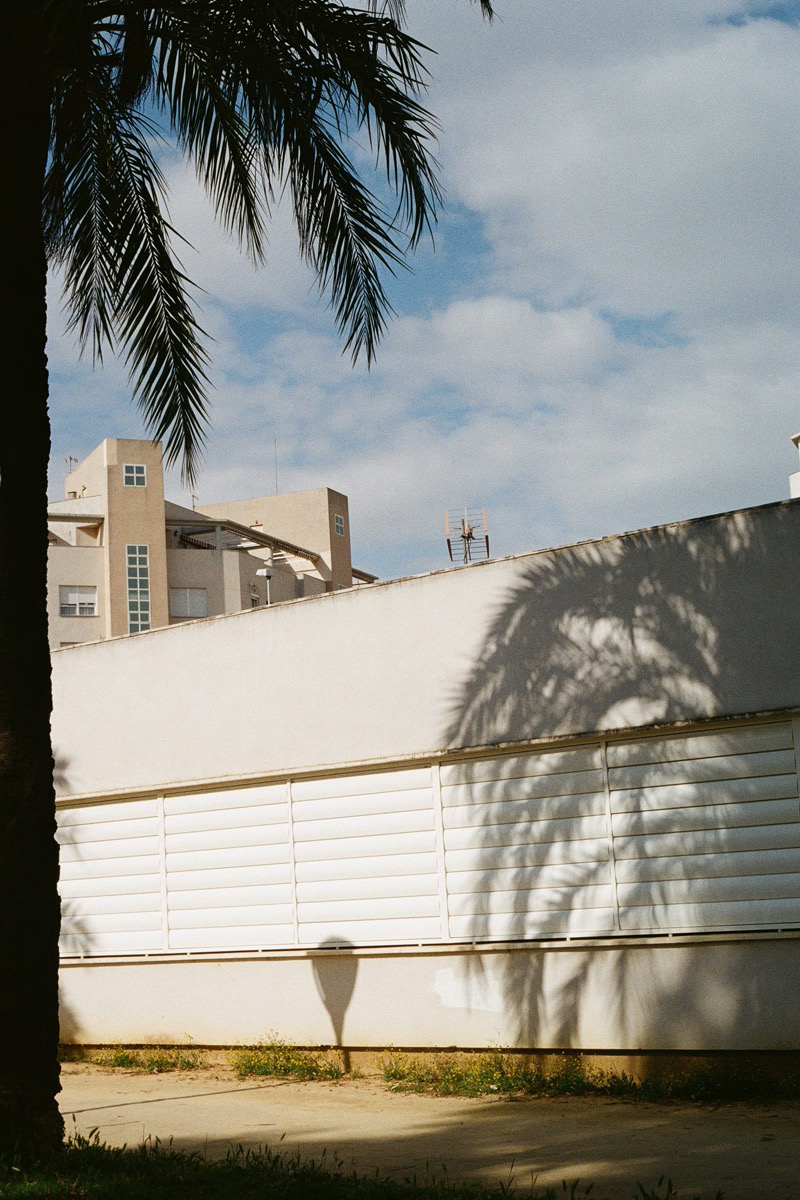 Source: Tobias Raschbacher
Source: Tobias Raschbacher
TNC: You shared the POWER posters series, uncomfortable graphics that remind somehow Foucault’s assumptions about power and surveillance. Can you talk a bit about it? How did you come up with this concept?
TR: The idea to do a project about power came to my mind after a university course about international relations.
I wanted to explore what shapes the world we live in or who shapes it using which means.
It is an ongoing project since I want to discover more fields of power and creating infographics about it and turning them into poster series and eventually a small book featuring all of them.
I got more and more aware of the concept of power during the last years and how it even shapes our lives on a small scale and in the everyday life.
TNC: You just released the POWER part 2 few days ago, facing gender inequality…
TR: The second part of this project deals with power and gender. It features some infographics about the worldwide distribution of power between men and women and other facts.
I think it’s interesting how power structures developed and how the ones in power do everything to maintain those structures.
On the other hand, we can see a lot of improvements when it comes to inequality between men and women, at least in some parts of the world and we are still far away from having balanced power relations between men and women.
In the past years, I also became more and more aware of the power that lies in the everyday language we use. Especially in German, because every word is either feminine, male or neuter. This fact shapes how we perceive the world compared to human beings that speak e.g. English as their mother tongue since every noun has the same gender. I think it is very refreshing to see that the debate about language in German-speaking countries reaches almost everyone – even if many people get very emotional about it and complain about the “language police” telling them what they are allowed to say. But I think in a few years it will be normal to use inclusive language just as it is normal no to smoke on the plane today any longer today.
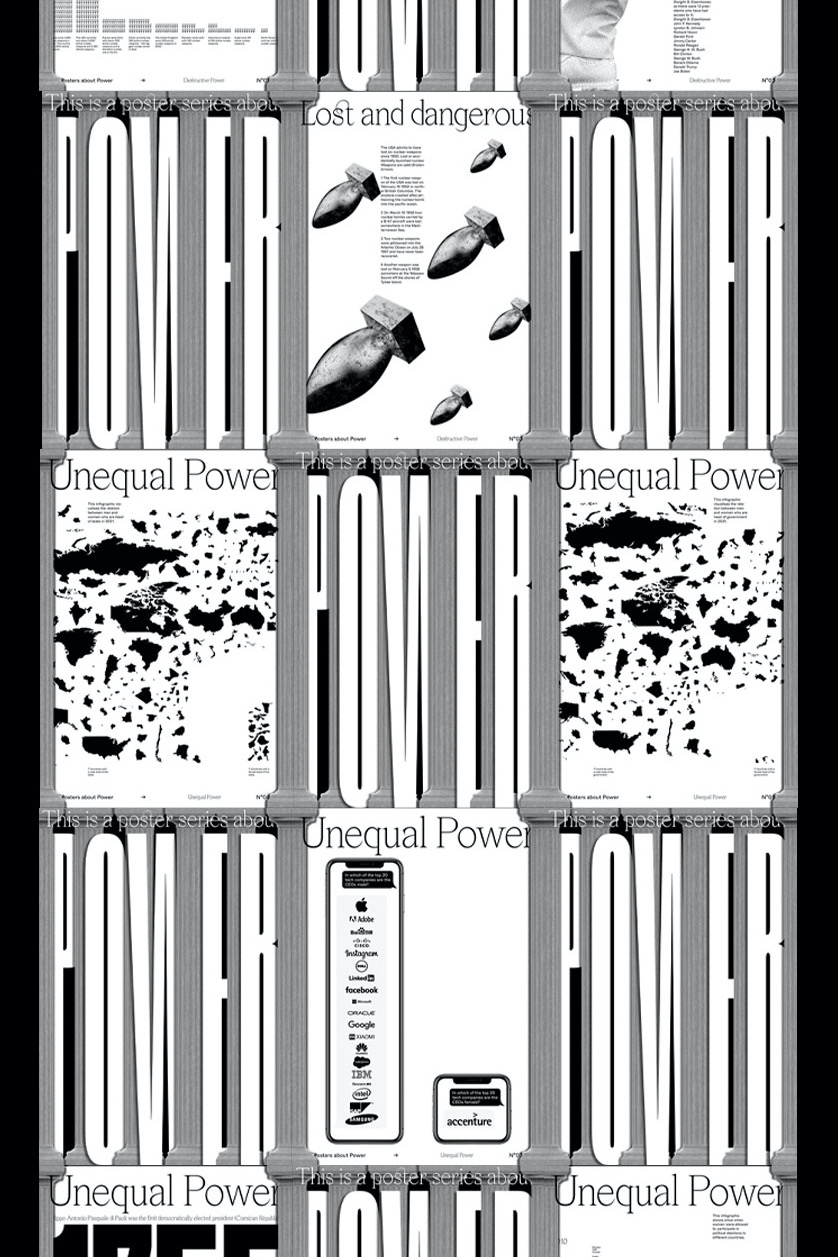 Source: Tobias Raschbacher/Power Part 2
Source: Tobias Raschbacher/Power Part 2
TNC: Your PostPoster film is a political reflection on communication. Could you explain a bit more your position?
TR: You could call PostPoster an obsolete innovation. It is the derivative of an analogue medium in a world of digital interconnectedness, basically an anachronistic invention.
What I wanted to achieve with this project was to make its recipients think about the possibilities of subversive communication methods in the offline world. Especially in regimes in which the whole internet is surveilled by the government and you can never be sure who is watching what you are doing, it is interesting to ask how the public space can be hijacked with new methods.
In the real world, the PostPoster wouldn’t have much impact in spreading information in China of course, but for me it was interesting to think about such a speculative design object.
I like to think about an obsolete object in today’s hyper-technological world.
Recently, I designed a portable quadruple CD player which is basically useless today, but 25 years ago it would have been the next big thing I guess.
 Source: Tobias Raschbacher/PostPoster
Source: Tobias Raschbacher/PostPoster
TNC: In your vision, what is the role of art in relation to politics and power? What are your objectives as an artist?
TR: I think design can and should sometimes be political, the same goes for art (but I see myself much more as a designer than an artist).
On the one hand, I think many artists and designers create political pieces driven by a narcissist motivation – you want to have woken political views and you show through designing some catchy artworks (I don’t even exclude myself from that). So political design is misused to gain more acceptance in your in-group but in the end, the message is also being spread and when adds a little bit to a more liberal and open society it cannot be fully doomed.
For me, it is important to question my role as a designer and how I can use my skills to create projects that do not just “look nice” but also have some concept behind that make people think about a certain aspect. I do not claim that this holds true for all my work, but I am working on it that it will become my new standard.
Furthermore, I don’t want to use my very privileged position to design more and more useful consumer products such as in classical advertising. Graphic design has always been much more and will always be. Trying to make this complex world a bit more structured should be the approach to a certain extent to every visual communicator.
TNC: You have collaborated with record labels and musicians. Do you play any instruments or work with electronic music yourself?
TR: I come from a very musical family, growing up surrounded by all different kinds of musical instruments.
I played the piano when I was a child and later bass guitar in several bands as a teenager. Just like everyone else in my age I was listening to punk, rock and a bit of metal which basically brought me through the weird time of growing up.
The first CD I bought for myself was The Offspring – Greatest Hits and I was already fascinated by the black minimalistic cover featuring their logo in silver. It also came with a booklet having all the single covers in it and I was just amazed how different each artwork was designed. You found illustration, photomontage and digital art style covers.
I guess this subtly taught me about the possibilities of graphic design but I have not thought about doing this professionally at that moment in my life. This was also the time when people used to burn CDs and I also got a lot of copies from friends, e.g. AC/DC albums.
I remember trying to re-draw the covers and tracklists on the backside or even thinking of my own cover for certain albums. So that was probably my first connection between design and music.
I am really happy that I still experienced the time before music consumption got 99,9% digital when you would buy a CD from your favourite band so I learned to appreciate the analogue value of a piece of music as well.
Later it became electronic music which fascinated me and my school friends. We had our first club experiences dancing to 175BPM drum and bass the whole night at Flex in Vienna. The graphic style of these DnB events was always very futuristic and I liked the aesthetics of it at that time. My music preference became more and more technoid which also brought more minimalistic and serious artworks with it.
Today I don’t play any instrument anymore but I DJ a bit, but only at home with friends and for myself. For me, it is a fantastic way to lose myself in the music I play (mostly house and deep techno) and have some offline time that also has a meditative element to it.
 Source: Tobias Raschbacher
Source: Tobias Raschbacher
TNC: What is more challenging to you when creating animations/designs for electronic music?
TR: In the end, you are creating a piece of visual content that has the function of promoting the music. Whether it is a poster for a dance event, an album cover or an animation for a music clip, recipients will always be there for the music and not for the graphic assets I produce. That sounds frustrating but it is far from being that to me as I couldn’t think of a lot what I wanted to support more with my skills than pushing electronic music further. And in the end, many people also appreciate the design work I do for different labels and producers which is unbelievably satisfying.
TNC: Is there anything else you would like to share about your creative pathway that would help other emerging designers pursuing the career?
TR: Create and share as much as you feel like and people will come and like your work and some of them will offer you jobs.
Discover Tobias’ incredible work, visit his website.
